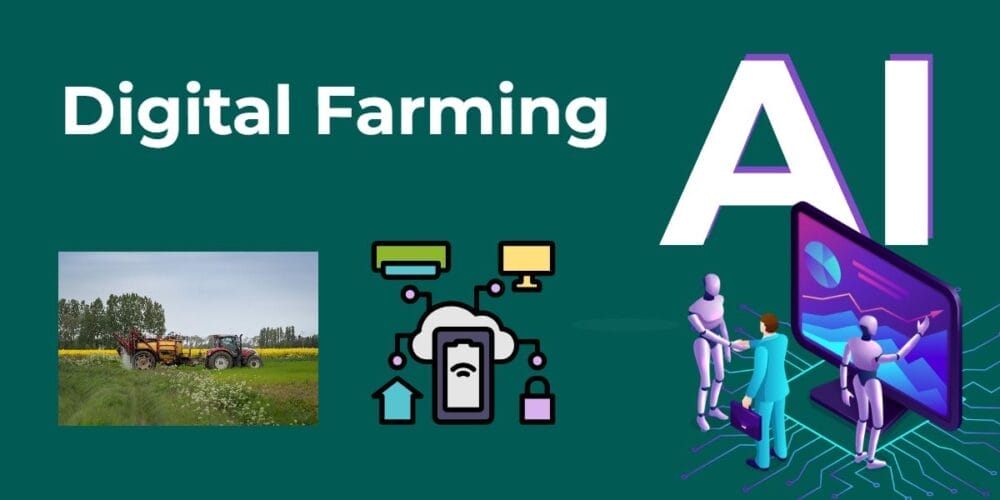Digital farming is a transformative approach to agriculture that uses advanced digital technologies such as IoT, AI, big data analytics, and automation to optimise productivity, sustainability, and efficiency across the entire agricultural value chain. This new paradigm is reshaping how food is grown, managed, and distributed, promising greater yields, reduced resource wastage, and enhanced resilience for farmers in the current era.
Table of Contents
What is Digital Farming?
Digital farming—also called smart farming, Agriculture 4.0, or e-agriculture—is the integration of technologies, including sensors, satellite imagery, drones, data analytics, IoT devices, and AI into farming practices. Unlike traditional methods, digital farming shifts from intuition-based management to data-driven, real-time decision making:
- Electronic data is collected, stored, analysed, and shared at every step, from land preparation to post-harvest management.
- Technologies such as GPS mapping, smart sensors, remote weather stations, and predictive modelling help in optimising irrigation, fertilisation, pest management, and harvesting.
Key Components and Technologies
Modern digital agriculture includes the following core components:
- Precision Farming: GPS, sensors, and data analytics for tailored field management and resource optimisation.
- IoT and Smart Sensors: Real-time monitoring of soil moisture, crop health, climate, and nutrient levels using connected devices.
- Drones and Satellite Imagery: Crop and soil monitoring, mapping, and aerial spraying for efficient and informed interventions.
- Big Data Analytics: Processing large datasets to generate insights, predict yields, and automate resource management.
- AI and Machine Learning: Intelligent algorithms for crop disease prediction, autonomous machinery operation, and yield optimisation.
- Blockchain: Ensuring traceability and transparency throughout the supply chain.
Impact on Contemporary Agriculture
Digital farming is revolutionising agriculture in several ways:
- Increased Yields: Over 70% of farmers using precision agriculture report higher crop yields within the first two years.
- Resource Efficiency: Data-driven management reduces water, fertiliser, and pesticide usage, minimising costs and environmental impact.
- Sustainability: Better monitoring enables sustainable practices, supporting environmental conservation and climate adaptation.
- Enhanced Market Access: E-agriculture platforms and digital traceability improve market connectivity and transparency for farmers.
- Resilience: Digital tools provide real-time risk assessment and response, which helps farmers adapt to unpredictable weather and pests.
The Future of Digital Farming
The coming years will see rapid evolution with trends such as AI-powered smart farms, 5G connectivity for real-time monitoring, vertical farming, and biotech innovations for resilient crops. Governments, agribusinesses, and tech providers must work together to overcome digital literacy gaps, infrastructure limitations, and adoption costs.
Digital farming holds the promise of a more efficient, resilient, and sustainable agriculture, capable of meeting the food needs of a growing global population while conserving vital resources.
Also Read: Role of AI in Farming in 2025!
Also Read: Digital Farming, from seeding to harvest, farmers today face many challenges.
